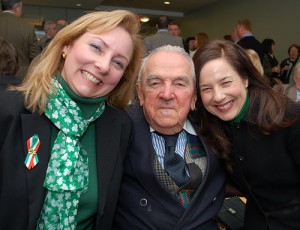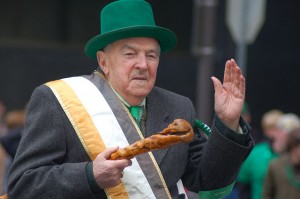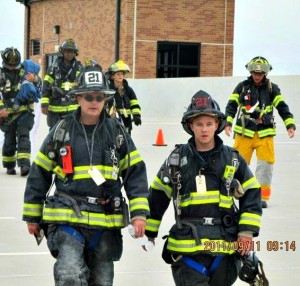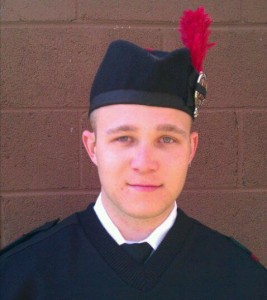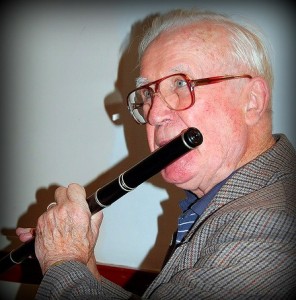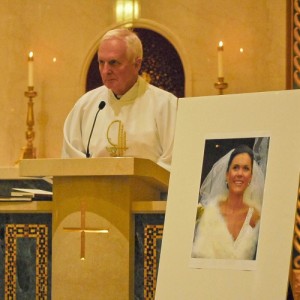When Knute Bonner died last week at the age of 87, Philadelphia’s Irish and Irish-American community lost one of its most colorful, kind and puckish characters. On Sunday, March 10, when the Philadelphia St. Patrick’s Day Parade passes along the Benjamin Franklin Parkway, it will be without its 2001 grand marshal. For those who knew Knute Bonner, it’s a moment of sadness, but also—as is the case with any Irish wake—it’s a moment to share stories.
Not surprisingly, there are a lot of them. We asked a few of his friends to share their thoughts.
Michael Bradley, Philadelphia St. Patrick’s Day Parade Director
“The Knute I Knew.” That would be a great title of a book written about him. He would jump from how he didn’t feel good, to showing me the wound on his leg, to telling you one of his jokes, to singing a song and possibly back to how we miss so-and-so who just passed—all in the same five minutes. Knute had a great outlook on life. He was always positive, and always ended with a chuckle—like he knew something you didn’t.
He was an entertainer, and when the red light and spotlight came on, he came on, the crowd came on, and the crowd loved him, and he loved them!
He thought the Irish were the greatest race on earth, but he didn’t really talk to me about being Irish, it was more about St. Patrick’s Day. That day meant the world to him. I still get chills down the back of my neck when I think of him singing “It’s a great day for the Irish.”
He also started the Southwest St Patrick’s Club in 1950, before I was even born, and to see those men and women still march with their third-generation marchers is a real tribute to Knute, since most of them have moved out of Southwest Philly. He was also very proud of all the Irish in SW Philly and West Catholic.
My best best story about Knute is not an Irish one. My son Colin was in fourth grade at St Pius X in Broomall. This was awhile ago since he now is a sophomore at Penn State with Knute’s grandson Shane. The teacher asked if any of the students knew anyone from World War II to share some stories. I told him, you have to bring Knute in—no one can tell better stories than Knute.
Well, it was a day I wasn’t going to miss. Knute started out by not seeing the chain in the schoolyard that separates the kids from the parking lot, and he drove right through it—starting the day off with a bang. He then tells me—kind of loud—when we get into class that “they sure didn’t make teachers who looked like this when I was in school”!
And for the next hour and a half—he was supposed to talk for 15 minutes or so—he had the teacher, myself and every kid in the class mesmerized! He started out telling them about his best friend from Bartram High School who was killed right in front of him. He talked about how their helmets were protection against bullets, but how they also shaved in them, and ate beans they cooked out of them—sometimes, all in the same day! He mixed in so many funny, sad, memorable, and patriotic stories in one big run-on story, he held my attention—jumping from story to story to story without missing a beat!
He was almost 80 years old and there wasn’t a veteran in America who could hold a candle to Knute that day. He tried to pass around a huge German sword, which the teacher rightfully took off the first kid, but that never deterred Knute; he never missed a beat. He just kept on going.
At the end, he asked if he could sing the “Star Spangled Banner,” and he told all the kids how they should always stand up straight, look at the flag, and remember all the people who gave their lives for this country. He had tears flowing down his checks—me, too—but he switched gears in classic Knute style and told them if they ever saw ANYONE who was sitting at a game when our National Anthem was being played or sung, that is was OK to go up and kick them right in the ass, as the tears turn again in mid-story to that laugh of his. The teacher looked at me and said it was not alright to go kick anyone, but Knute said to listen to him!
Knute’s visit was in the month of January. Kids don’t remember what you taught them yesterday, but on the last week of school, the kids voted on the best day of school and there were 34 votes for Knute Bonner Day, and 0 for any other day of school.
Knute was on the parade board since the early ‘60s, so there wasn’t much he hadn’t seen, and I always respected that. At his last meeting he attended in January, an issue came up about us inviting all the veterans, and I suggested that they all march together with the 82nd Airborne, but I wanted to get Knute’s opinion. So I asked him to address the audience and he did so eloquently, and thoughtfully and told us how his group, the Battle of the Bulge, had too few members to march. His last public comments were that of a man who was 87 years old, but we hung on every word in deep respect for what that man did for our parade and our country.
Bob Gessler, President of the Philadelphia St. Patrick’s Day Observance Association
He was simply an omnipresent figure. From the very first time I became involved, there was Knute.
He served on the parade board for over 50 years, and was, if the not the longest-serving member, very near the longest. He was on the board longer than I’ve been around. Just imagine the love you must have for your heritage, your faith and your city to serve that long.
He was a person who always cared about every person in the parade. He thought about how we can eliminate delays, how we can make the parade better and more enjoyable for everyone.
He obviously lived his life caring and striving to make it better for everyone. He made it known to all that he served in the Battle of the Bulge, and it never was a “me” thing; rather a tribute to all those who served with him.
He was truly a remarkable, many-faceted man and one hell of an Irishman.
Mary Frances Fogg, St. Patrick’s Day Parade Board Member
Knute Bonner was always joking, and always good for a laugh. For years at the parade meetings Knute has been asking the board to purchase walkie-talkies, so we can talk to each other and to the marshals during the parade. So after years of Knute asking, a few weeks ago I purchased walkie-talkies, and I was going to present them to him at the Grand Marshal Annual Dinner this year. I knew he would get a kick out of it, and finally put this discussion to rest.
So after hearing of Knute’s passing, I thought about the walkie-talkies, and I sent a few members of the board an email telling them about the purchase. Kathy McGee Burns suggested that we put one of the walkie-talkies in the coffin. I quickly responded that she would have to take possession of the other one just in case he calls! And knowing Knute, he will!
God Bless Knute, and his wonderful sense of humor. He still has us laughing. He will be greatly missed.
Bridie McCafferty, St. Patrick’s Day Parade Board Member
Knute Bonner was a sweetheart. He made you feel like you were the most important person in the world when he saw you.
He was not a politician or a celebrity, but you wouldn’t believe the crowds that came to pay tribute to him at his viewing and funeral Mass. This shows how he touched so many people.
Knute was the life of the party, made lifelong friends quickly, and was always up for a bit of fun. When he motioned you to come near him with that twinkle in his eye, and he changed his voice to a whisper, you knew you were going to hear a joke or funny story.
But it was his quiet and humble way of doing charitable work for those less fortunate that I will also remember. For many years, Knute put on Irish Cabaret shows for the elderly at local nursing homes. The joy he brought to his audiences was, as they say, priceless. His life was one of loving service to his family, the church, the Irish community, and veteran causes. You couldn’t meet anyone more generous than Knute.
Knute’s love of God created a joy of life which he richly shared with others, and a sense of service and duty to others that extended to risking his own life in WWII.
We are all the better for knowing Knute.
And I can only imagine what March 17th will be like in heaven this year, with Knute singing ‘When Irish Eyes are Smiling’ with St. Patrick himself.
God bless you Knute, and God bless your wonderful family.
Kathy McGee Burns, Philadelphia St. Patrick’s Day Parade Board Member
I can never remember a funeral as big and beautiful as Knute’s. It was a tribute to a great man. In his death, he was remembered as he lived—not in a maudlin way, but in a happy way.
Knute was buried dressed in his emerald green high-top sneakers, with a shillelagh, his WWII cap, his service decorations,a grand marshal’s sash, a walkie-talkie,an Irish shamrock tie, a book titled “Irish Philadelphia,” a rose in his pocket , a CD playing songs from his string band days, and his Green Top Hat.
I watched the people lean over and kiss him, or rub his hand. I bet there were 1,000 people who came to say goodbye to Knute. The eulogy by a family friend, John Delaney, was nothing short of a vaudeville show, filled with Knute jokes. Pat (Bonner) told me that they closed I-95 for the procession of a “Fallen Hero”as they went to the cemetery.What a farewell party!




